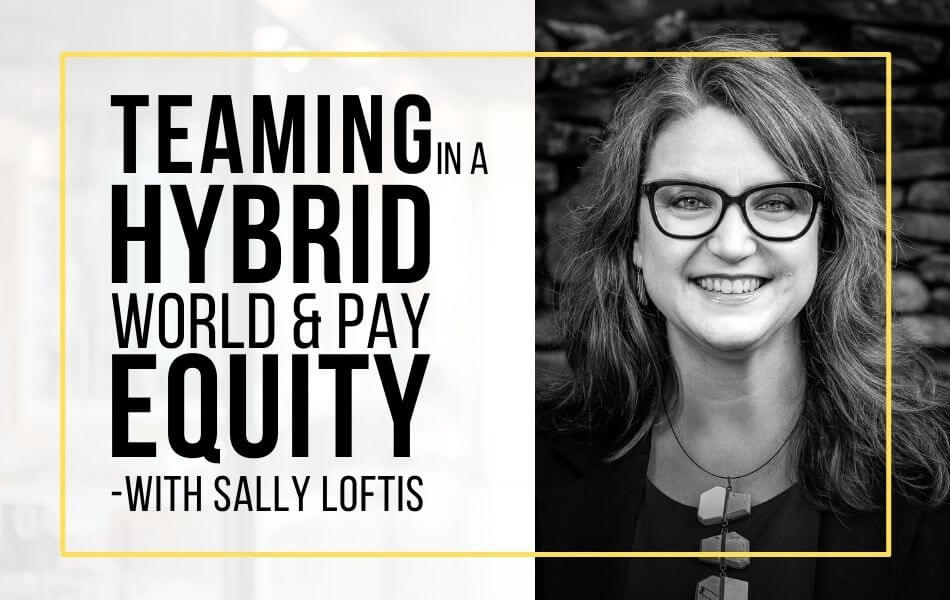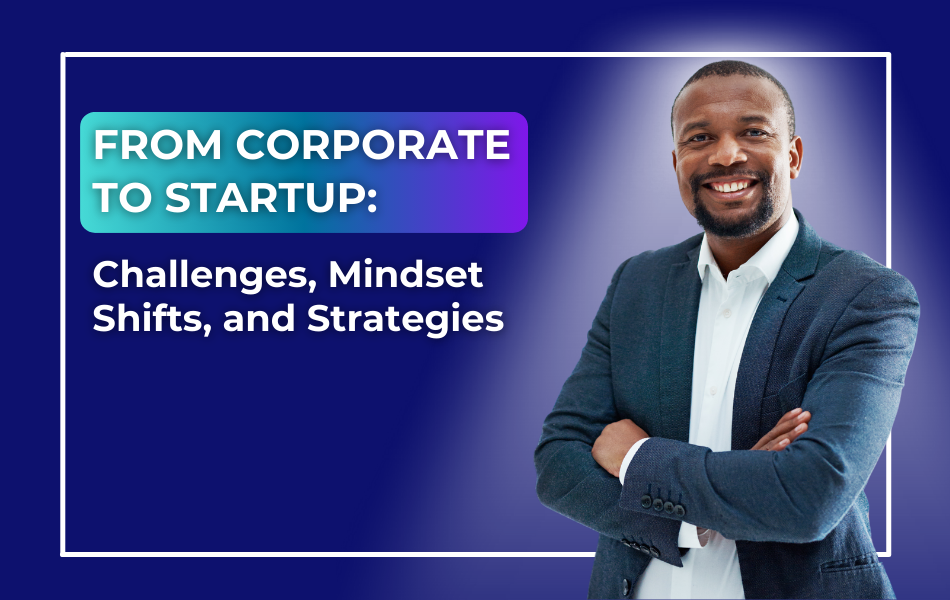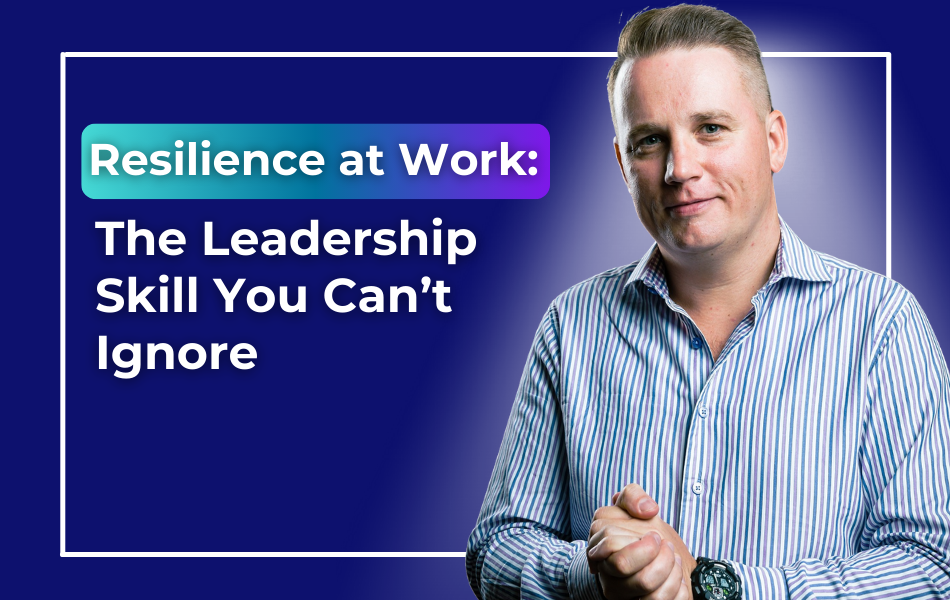
170. Teaming in a Hybrid World and Pay Equity with Sally Loftis
About this Podcast
Ep. 170 – If you’re feeling frustrated and overwhelmed by the lack of team engagement in your remote and hybrid work environments, then you are not alone!
Despite your efforts to encourage collaboration, you may be encountering disengaged or siloed team members.
It’s time to address these challenges head-on by intentionally implementing effective strategies to boost team engagement in your remote and hybrid teams.
If that sounds like something you should be paying attention to, then tune into this week’s episode of The Manager Track podcast as my guest, Sally Loftis, shares her valuable insights on how to navigate team engagement challenges (and controversial pay disparities!) that plague many teams today.
In this episode, we talked about:
- Mastering the knack of elevating team engagement in remote and hybrid work landscapes.
- Strategies to handle pay equity and address imbalances within firms.
- The keys to effective communication and respecting individual preferences in remote collectives.
- Identifying methods to bolster team engagement and inclusivity within your organization.
Episode 170 Transcript:
Ramona Shaw [00:00:00]:
In this episode, I’m going to speak with Sally Loftis on the topic of teaming in a hybrid world and pay equity. Teaming in a hybrid world is something that often comes up with my clients, where they wonder, how do I create this engaged team when we’re not in the office together? How do I encourage or motivate my team members? How do I bond with them? How do we do these team building activities? And what might be some red flags I should be paying attention to if I worry or in order to early detect if someone seems disengaged or demotivated or doesn’t feel included in the team. That’s what we’re going to talk about in this episode, and we’re going to touch on pay equity s. This is something I care about, and I’m sure you care about as well. And Sally knows quite a bit about how to navigate conversations around pay equity. Without further ado, let’s dive in. Here’s the question how do you successfully transition into your first official leadership role, build the confidence and competence to lead your team successfully and establish yourself as a respected and trusted leader across the organization? That’s the question, and this show provides the answers. Welcome to the Manager Track Podcast. I’m your host, Ramona Shaw, and I’m on a mission to create workplaces where work is not seen as a source of stress and dread, but as a source of contribution, connection, and fulfillment. And this transition starts with developing a new generation of leaders who know how to lead so everyone wins and grows. In the show, you’ll learn how to think, communicate, and act as the confident and competent leader you know you can be. In this conversation, I’m joined by Sally Loftis. Sally is the managing director at Loftis Partners, a consulting firm located in North Carolina. Loftis Partners specializes in strategy, people, facilitation, and pay justice. Since launching in August of 2020, Sally and her firm have worked with over 54 clients across three different continents. I’m excited to share this conversation with you and introduce Sally Loftis to the Manager Track Podcast audience. Here we go. Sally. Welcome to the Manager Track Podcast. It is great to have you here, and I’m very much looking forward to this conversation with you on Teaming in a Hybrid World.
Sally Loftis [00:02:17]:
Thank you, Ramona. I’m excited to be here.
Optimize Team Performance Through Effective Collaboration.
Ramona Shaw [00:02:19]:
So you do a lot of work across the globe with teams and figuring out how they can build this team engagement when they’re working in a hybrid setup or in a remote setup, in addition to other things that you do. And we’re going to talk about that in a little bit as well. But on the work of team engagement, this is something that often comes up in client conversations that I have, where my clients are looking for more inputs and ideas and ways to engage their team when they don’t physically see them. What do you think are some of the common challenges that you experience in the work with teams and leaders?
Sally Loftis [00:02:56]:
Absolutely, thank you for that question. I will say just kind of a couple right off the top of my head. One is that a lot of times, depending on the size of the business, they may have an organizational strategy for a hybrid work environment, which is great and gives kind of a scaffolding for people. But really a lot of the detailed work for managers is really at that team level and there needs to be a level of kind of conversation and work happening there simultaneously to the kind of business wide or organization wide strategy. I think the other piece is that people try to act like one size fits all to these situations, right? And so how your team is going to function is going to be dependent on who’s on your team and kind of what their different situations are. And even based work with global groups, kind of based on time zones or maybe what the culture is in that country, what languages are spoken, things like that. So those are a couple of immediate challenges that I think about.
Ramona Shaw [00:03:54]:
I love that you said there needs to be a conversation on that team level. When I work with leaders that are just getting promoted into their first leadership role, we focus a little bit less on that because oftentimes it’s only a couple of people that they start managing initially, not always. Sometimes they’re thrown into the deep end with six, seven direct reports, but oftentimes they’re sort of gradually building up that team and the team conversations flow more naturally. But the moment someone has an established team or even manages other managers and is managing and responsible for a bigger team, I find this to be an often underlooked and undervalued, yet incredibly important aspect of their work. And in the programs with mid level leaders that is one of the core pillars is leading a team we call it a team operating system that we build because exactly of this and I would love to hear your perspective on what are some of the topics that leaders need to pay attention to on that team level that you think are often not organically happening?
Sally Loftis [00:04:59]:
Yeah, and I love the way you put that team operating system right. Because it is you’re thinking about kind of how do we get our flow as a group, right? You’re bringing unique individuals into this group environment and everybody’s going to have different strengths, different ways of working, different ways of showing up. And so you as a leader want to tap into this group, the potential of this group. And one of the ways that you can do that is one is just kind of checking in with your team and when do you do your best work. Tell me about some experiences, right, that you’ve had in other teams where things have worked well. What are the conditions that are happening for you to do your best work? I think number one is just having a conversation where people feel like they can share and just share experiences. And if people don’t feel comfortable talking about things that have happened in the company, talk about teams you’ve been on in other areas of your life, right? And then you can kind of, like you said, the operating system get into and work with a lot of groups to build team agreements. So how is it that you as a team want to work together? If you’re working remotely or hybrid, are there certain hours that everyone’s accessible by email? Right? Are there certain roles? Are there times that you want to connect? And when you do connect, what’s the purpose? How do you support people who can’t connect at that time? Do you have notes? Are there people rotating facilitations? I think also, how do you get updates? You really want to prioritize those meeting times for connection, especially in a remote and hybrid work environment. Because if anything can be done synchronously and asynchronously you want to use those synchronous times for that connection.
Different Communication Methods Impact Teamwork and Connection.
Ramona Shaw [00:06:45]:
So what I just heard you explain is in the team agreement, what you often talk to with your clients is evolves around meetings and how meetings are conducted, information sharing and how is information passed through the team. And then specific communication channels and how they should be managed and what the expectations are for those. Is that right?
Sally Loftis [00:07:11]:
Yeah, and just kind of basic availability. It’s almost like some people talk about like a team charter or an about US type thing. If you’re able to kind of put these agreements together on a piece of paper, online, whatever, it doesn’t have to be a four page document, it can be four or five bullet points, right. That’s something that all of you can agree on. It’s also a great way to orient people to your team if you’re working in a new department or a new organization or whatever, but also for when you have new team members. Come on. Because those agreements may change a little bit based on where they are, but it’s just kind of a way to say, hey, let’s kind of coalesce around these pieces. So each of us knows how we’re doing our work as this kind of unit of people, beyond kind of that organizational umbrella that people have for remote work environments.
Ramona Shaw [00:07:59]:
Yeah, and it’s so funny how oftentimes people think, oh no, we’re on the same page, we often talk, we’ve worked together for a long time. And then when I do work with teams around time management or around team agreements or similar to that, and we talk about what is expected in terms of email response, and I create a poll, and then people realize, oh, man, I was thinking that a two hour turnaround time was what we all expect, because that’s what I expect. And then they realize oh, wow, no, someone else thinks a 48 hours turnaround time is most appropriate, right, exactly. How do we so mismatched? I think it’s often hidden of these little expectations that we make that are implicit and never made explicitly.
Sally Loftis [00:08:46]:
Yeah, that’s a great point. That’s a great example of even just thinking about how sometimes I’ve worked with clients who are really trying to decrease email and so they do a lot of work on something like Slack as a space. And it’s so funny because my email expectations of them are very different than my other clients who do most of their work via email because I’m like basically if you’re not talking to them on Slack, they may not see an email for a week or two. And so just even those little things and thinking about as a team, like, okay, I know teammate B is accessible to answer this email on Monday through Friday from 10:00 A.m. To 02:00 P.m. Eastern or something. I know that I need to send my emails or we need to have meetings in, or I may not get an answer. And it really helps build this culture of a group coming together and kind of supporting one another. But also, again, kind of prioritizing that connection, which is really important between team members, but also as a manager of just thinking about like, am I building connection with my individual team members as well on top of the whole yes, yes, very true.
Ramona Shaw [00:09:54]:
And actually interesting that you brought up Slack or even teams, which can be a big productivity booster, but it can also be a big productivity killer if not managed well and if we don’t understand individual preferences and then find a way to agree and define how we’re going to work together as a team.
Sally Loftis [00:10:13]:
Yeah, I would say hashtag relationship goals for those people who can do Slack and teams really well. Because it does it takes a lot to your point, it takes a lot of organization and conversation about how are we going to use these products to help increase our productivity. And we have buy in that everybody’s going to use it in similar ways and people know how to access previous documentation, whether it’s document files or conversations or things like that.
Attendance, Conversation, Check-Ins, Rewards, Community With Managers.
Ramona Shaw [00:10:44]:
So in addition to having this conversation around how do we operate and how do we navigate ourselves and what we focus on as a team, what are some additional ways that for a leader who has a remote team? That they can reach out to team members, do things and connected or pay attention to specific symptoms or flags or green flags or white flags, whatever that might be. That indicates that the team is in a healthy place. And despite being in a hybrid setup, there’s actually a strong bond there that defines the team.
Sally Loftis [00:11:18]:
Yeah, I think there’s kind of some formal and informal cues you might pick up on. One is attendance at meetings if people are showing up, what the conversation is like at the meetings where you are, if you’re having meetings, are there some meetings where there’s a lot of conversation and there’s some that aren’t? Right. And kind of what’s happening? I think having times where you’re doing personal check ins with your employees individually, it can be ten minutes. Right? But just saying, hey, I hadn’t talked to you, how’s it going this week? Whatever the employee feels comfortable sharing, they will, but I mean and kind of sharing what’s going on with you. Hey, I’ve got a really busy week. We have a big family reunion this weekend. I’m only going to be available by email this week. Just little things like that, that really normalize connection are really helpful. And you can do that. You can go old school and do it by phone or you can do it by zoom or you can email, whatever it is. I think also, again, is thinking about as a leader, how can you reward team behavior? So are there times if you’re having weekly or biweekly team meetings that you can say, hey, we did this really well as a team, recognizing, hey, I really liked how these two or three people were able to pull this together. Really kind of being intentional about recognizing what I call teaming. Working together as a team is really important. And then I think it’s also important for managers to be in community with other managers. Whether it’s a group at your work or some kind of learning group, peer group offered by another company or whatever, where you can talk to and be in community with people who are doing the same work as you and be able to talk through issues and be like, hey, I’ve got this one team member that never turns on their camera, right? And people are struggling. Maybe everybody else on the team feels connected to that person, but I don’t, right. Just being able to be in community and talk to other managers is really important because it helps build this peer learning source for you.
Ramona Shaw [00:13:20]:
I can’t highlight that enough. I think the peer group and the social learning aspect is so, so important and I think especially in the hybrid world will become increasingly important and valuable to people who otherwise feel a little bit in a silo. Especially as a manager. They can’t bring all the problems to their manager because that has an impact on their reputation. They also can’t bring it to their team members. And even with direct peers, they need to be mindful. So having a good peer group of other manager swimmers shoes in that confidential setup is so useful. I wanted to ask you about this question with someone not turning on the camera, but then you brought it up as an example. I’m going to jump on that.
Team Expectations, Camera Choices, Engagement Strategies.
What would you suggest for someone to do who actually says yes? Team engagement? Overall, I think we’re doing fine, but I always have a hard time getting people to turn on their cameras or even and I hear this often too, to engage in meetings. It always feels like a monologue and then there’s no response back. So what do they do in either of those situations?
Sally Loftis [00:14:19]:
Yeah, so let’s talk about kind of not being on screen. One is, again, having that conversation as a team. What are the expectations? Do we have an expectation that everybody’s going to be on camera? Do we have an expectation that it’s a choice because sometimes people are not on camera due to maybe where they are or they’re not feeling well or whatever. Some people feel more comfortable being off camera. So I think just having a conversation as a team, just about, hey, how do you all feel about being on camera? What do you feel like our agreements should be around being on camera? I think also I would encourage that manager to have an individual conversation with each person, just to be like, hey, maybe that manager has gotten some feedback about it. I find people have strong, varied opinions about being on camera. It’s super funny because I default to being on camera, but there are a lot of people who default to not. So that may be a generational difference. I don’t know. So I think just having that conversation and then the other piece is really around engaging. So thinking about what I find is that people tend to look for engagement opportunities in smaller groups. So if you’re just having a group of five people and only one person is talking, see if you can maybe give people ten minutes in a breakout room, one on one, like a group of two, group of two or something like that, just to see if they will talk in there. Of course, you’re not going to know because you’re not in there, but you’ll probably be able to tell whenever those people come back and recap, you’ll be able to kind of measure whether or not people are engaged. I think another thing is thinking about how can you encourage engagement along the way where you’re getting feedback. So let’s just think about like a Monday through Friday work week. You’re having a team meeting on Wednesday, you’re going to talk about this project coming up and maybe some of the decisions you need to be made. See if you can get that email out to your team or whatever. A couple of days ahead, week ahead is amazing, but a couple of days ahead and say, hey, we’re going to have this discussion on Wednesday. If you have any questions or things you think we need to discuss in this, here’s a document to add that information to. Then you take that, incorporate that into your Wednesday team meeting and then afterwards saying, hey, if you have thoughts after this, after this discussion, we just had questions, add it to this document by Friday the same week and just then thinking, okay, then we’re going to move forward on Monday. So it really kind of gives people some time because not everybody can process in the moment, right. Or may think of something right afterwards and be like, I wish I had added that. I was distracted, I was really trying to focus on what this person was listening to. So I think that’s another way that’s also an inclusive practice, but a way to kind of ask people to synchronously and asynchronously add to the conversation. And then if people are not doing, if you’re just not getting engagement, I’m of the type who’s just like, can we just talk about how nobody’s responding? You may not feel comfortable doing that, but sometimes just like, hey, why is everybody quiet?
Ramona Shaw [00:17:13]:
Yeah, elephant.
Sally Loftis [00:17:14]:
Yeah, exactly.
Ramona Shaw [00:17:17]:
I appreciate you saying there is something to discuss and agree on a team level and then to bring it up individually. And what I also found is the sooner people leaders define those norms or set those team agreements in place, the more they’ll be able to prevent such awkward situations down the road. Right. Because even if you are in the interview process with someone and you think like, hey, they might be a great fit, you can walk them through your team agreement and say, this is how work within this team would look like. Here are some of the values that we honor and here are some of the specific practices and actions that we expect from team members and what we align on. And if it says on their camera on and you’re setting that expectation up front and it’s not going to come as a surprise down the road where they feel like, well, that’s now awful. I didn’t know that and I don’t like it. But they knew that from the beginning.
Sally Loftis [00:18:09]:
Yeah. Imagine being a candidate interviewing for a job and you’re about to get an offer and you get kind of a document. Again, it doesn’t have to be a huge document or anything, but just something that kind of gives, here’s how we operate and we look forward to you joining and seeing how you can add to this, but it would give you an insight look into this team. But again, like you said, it’s also setting expectations and I think these team agreements are something that I would revisit every six to twelve months just to be like, hey, is this still working for us? Has anybody had life situation change? Whatever. Because again, you’re working with a group of dynamic people who are not static all the time and life is not static. So you can be agile by kind of shifting to what’s happening in people’s lives.
Ramona Shaw [00:18:54]:
Yeah, exactly. So thank you so much for sharing this information around team engagement and some specific tactical action items that we can all do right away and conversations we can have from the first minute on you dropped. There some questions that I actually took note of and I thought, oh, great questions to bring up and check in one on one, then check in on a team level and pay attention. Just really being on it. I think that’s the core when it comes to this teaming in a hybrid world.
Pay Equity: Approaching Fair Pay for All Employees From a Place of Curiosity.
Now, the second specialty that you have and special expertise that I wanted to quickly touch on is around pay equity. Tell us a little bit more about that.
Sally Loftis [00:19:28]:
Yeah, I work in the pay equity space, which there’s a lot of different words that float around, but when we’re talking about pay equity, it’s thinking about people getting paid equitably for the same jobs within an organization, which also is related to pay parity. Right. Sometimes we look at that from a race ethnicity, gender perspective, some of those intersectional identities, but really looking at how are people paid? And again, work in this space with a sense of curiosity, not judgment of just like, hey, what I find with organizations, I work with them on pay equity and they may bring me in and be like, we’re just getting a lot of employee feedback about they’re not happy about pay and we don’t understand. That may be where we start. Right. And which I will say, great, I’m excited that you’re getting employee feedback because not everybody has that. Two is that people are willing to share that with you, which is a sign of engagement. And three, we just start looking at it. And I’m surprised by how many people don’t really understand how pay is structured in their organizations and why maybe two people in the same position are getting paid differently and maybe vast differences and don’t really have any kind of documentation or structure for that.
Normalize, Discuss, and Address Pay Disparities at Work.
Ramona Shaw [00:20:37]:
So from a manager’s perspective, not necessarily from the HR viewpoint, but from any manager when they care about or exposed to and then care about pay equity and salary ranges, what are some of the specific things that you suggest they be on the lookout for?
Sally Loftis [00:20:55]:
Yeah, that’s a great question and I love how you’re kind of bringing it to the manager because a lot of times people in decision making roles can make a big impact no matter where they are in an organization. So one is that I would just see if you have access to your team’s pay. Not every organization I work with has access to that. So even knowing what your team is paid, so just even asking questions, again, sense of curiosity, not judgment. And maybe with HR finance, whoever of just like, hey, why are these two people paid different? Can you walk me through that and then have a conversation with your team? Do you know how pay is structured? Normalize talking about pay, I think that’s important because what I find is a lot of people don’t talk about pay at all at work unless it’s like secretly in a slack channel or behind closed doors or you know what I mean, people are whispering to each other. They’re not having conversations about pay. Another piece would be just having a conversation with your team about what motivates you. Pay is going to be one of them. But also understanding what are the other things that motivate people, which is a great thing, again, as a supervisor, especially managing a remote team, is that not everybody’s going to be motivated by the same thing. But as you know that you can really kind of manage appropriately to people’s needs. The last thing I would say too is just thinking about how can you have conversations if you know there’s some pay disparities or inequities in your organization? Are there ways that you can start having a conversation? Maybe it’s with your boss or maybe you’re in a working group or maybe it’s with HR and just be curious and start having a conversation and see where it leads.
Ramona Shaw [00:22:37]:
And I like your emphasis there on curiosity because sometimes when we do get access to the data and we may see some shocking information on there where big question marks pop up, especially if you have this sense of equity and we really strive for fairness on the team. We may not know where it’s coming from, but we are quick to judge. So in that moment, to take the judgment out of it first and just inquire, tell me how this got to be so different. What were the considerations over the last few years? What were the reasons for either bigger or smaller increases one versus the other? That sounds like a great approach to start the conversation. And what I also hear from you is that managers do have influence over this and should take it seriously to their part in order to level us all globally up on that pay equity scale to reach better situations in the future.
Sally Loftis [00:23:33]:
Yeah, and I will say one thing that sometimes I will suggest as managers is really even looking at, thinking about a lot of times if people are leaving because of pay, right? Thinking about how long does it take you to replace somebody who leaves. Some people, it could be anywhere from 30 to 90 days. And then that new person coming in may be working at half productivity for those first three to six months and just start kind of calculating that. And a lot of times if you look at the gap, kind of the cost of posting the position, the recruiter is working on it, whatever, and then the work lost while you have somebody else or maybe somebody else is having to take on the extra work as a side duty or whatever. And then kind of the productivity loss. A lot of times the cost to replace that person is actually higher than just bumping that person’s pay up. Now you want to do that in an organized way. So you don’t just bump one person’s pay up and then throw everybody else off. But I see a lot of times people think short term, not long term on pay equity decisions.
Retention, Turnover, and Investing in Growth.
Ramona Shaw [00:24:35]:
So what are some of the factors that you would take into account for a long term perspective?
Sally Loftis [00:24:41]:
Thinking, what is our retention rate? What’s our turnover rate? What’s our goal? I’ve worked with organizations who’ve had 40 and 50% turnover and talking about the institutional history that’s lost every time you turn over somebody. And really, did they ever get somebody up to full speed if they only worked there a year? Right. And just churning the same money over and over again versus how can you build positions that are meaningful and people are going to stay and continue to contribute more as they’re longer with your organization? So there are some organizations who are like, yeah, this is a role that we’re just going to crank out new people every two years. That’s fine, whatever. There are some organizations it would be great if we could grow someone into this next leadership role, and we’d love to do that in house. So thinking about how do you retain that person until they’re ready and invest in that person.
Ramona Shaw [00:25:36]:
Yeah, and I can also imagine not just looking at it from a pay perspective, but what are all the factors that lead to the person leaving? Because sometimes pay is an easier one to say, well, I get paid more over there than I do get here, and so I’m going to take that opportunity. But that’s usually not the full not always, but often it’s not the full story to it. There may be other reasons why that person’s leaving.
Sally Loftis [00:26:01]:
Yeah, well, and I was going to say, a study just came out today from Wall Street Journal about how on average, when people move to a new role outside of their organization, they’re getting about a 7.6% increase in pay, whereas somebody who stays at the organization is getting a 5.6% increase in pay. That’s 2-2-I know when you look at kind of the turnover, what happens when you retain people for longer, I know the money is there. It just may not be immediately, but just thinking about 2% is so small compared to what would happen if you retain an incredible employee.
Ramona Shaw [00:26:39]:
Yeah, totally. Thank you so much for sharing that as well on the pay equity topic and also just raising the awareness and I don’t talk about this often because I’m not from a legal side. My background is not in HR. I’m really coming from that leadership perspective, the management side of things. And so bringing your perspective in and hearing what the work that you’re doing and how you’re elevating the topic overall, but also helping all of us see what kind of influence we have and how we can advocate or move the needle into the right direction as we’re wrapping up. What is something. That you think would be important for the audience to know but we haven’t yet talked about.
Sally Loftis [00:27:19]:
I think I would want to share is that some of the things we share today, you may think that would be great for whenever I manage a team next. Right. It won’t work with my current team. I think I would want to say to everybody is that no matter where you are in the team, if you have one employee, you have 20. If you’ve been managing this team for ten years, for ten days, all of the things we talked about today are applicable and you can do right now. You can always kind of restart or reboot where you are and just start small, kind of start building those relationships, and it will make a difference over time. I just want people to hear that. Definitely you can make a difference in what you do today.
Ramona Shaw [00:27:59]:
Yeah. Really good one. Really good one. Where can people find more about you?
Sally Loftis [00:28:05]:
Yeah, thank you for asking. There are several ways. I’m always on LinkedIn. I’m there multiple days a week, so that’s the best place you can connect with me. And I also have a monthly newsletter called the Fully Human Resources Newsletter, where I share monthly tips about human resources and different aspects. There you can also find me on my consulting page website, which is www.loftispartners.com, which I’m sure I’ll share with you and hopefully will be in the Show Notes and that’s loftis. And so I would love to connect with you. Please connect with me on LinkedIn. Happy to set up a time just to chat. And I will also send kind of a blog post about some of this teaming stuff that we talked about today so that your listeners can access.
Ramona Shaw [00:28:50]:
That wonderful. Thank you so much. We will drop all the links in the Show Notes, and if this is something that you want to learn more about and you’re interested in having the conversations around teaming in a hybrid world and or pay equity, then check out Sally’s Page or connect with her on LinkedIn. Thank you, Sally, for being part of the Manager Track podcast.
Sally Loftis [00:29:10]:
Thank you.
Ramona Shaw [00:29:12]:
If you enjoyed this episode, then check out two other awesome resources to help you become a leader people love to work with. This includes my best selling book, The Confident and Competent New Manager, which you can find on Amazon or @ramonashaw.com Slash Book, and a free training on how to successfully lead as a new manager. You can check it out @ramonashaw.com, masterclass these resources and a couple more you’ll find in the Show Notes down below.
Discussion Questions:
1. How can I create a culture of support and connection within my teams, especially in a hybrid work environment? What are some practical steps I can take right away to foster more engagement and collaboration?
2. What are our current team agreements? What would I like our team agreements to be? What steps can I take to align where they are now to where I want them to be?
3. Do I have a team operating system in place? How can I ensure that I understand the strengths and working styles of my team members to create an effective team operating system?
4. How can leaders in my organization normalize conversations about pay within their teams? What are the potential benefits and challenges of discussing pay openly?
5. What steps can does my organization take to ensure pay equity across the organization? How can leaders in my organization address pay disparities or inequities that may exist within their teams?
Who is Sally Loftis?
Sally Loftis is the Managing Director of Loftis Partners. Sally and her firm have played instrumental roles in mirroring strategy, people, facilitation, and pay justice to more than 54 clients worldwide. From her roots in North Carolina to addressing global work cultures, Sally’s remarkable dexterity lies in recognizing and addressing the unique needs of varied workplaces, navigating organizational structures and building effective teaming strategies that drive engagement and collaboration.
Where to Find Sally?
Website: https://www.loftispartners.com/
Company LinkedIn: https://www.linkedin.com/company/loftis-partners
LinkedIn Profile: https://www.linkedin.com/in/sallyloftisloftis/
RESOURCES MENTIONED
- Follow and subscribe to my monthly LinkedIn newsletter, Fully Human | Resources
- Subscribe to Sally’s monthly email newsletters here
- Check out our Blog
- Here is the blog post that I mentioned about virtual teaming.
- Learn how to turn your 1-on-1 meetings from time wasters, awkward moments, status updates, or non-existent into your most important and valuable meeting with your directs all week. Access the course and resources here: ramonashaw.com/11
- Have a question or topic you’d like Ramona to address on a future episode? Fill out this form to submit it for her review: https://ramonashaw.com/ama
- Episode 5: The 4 Ways to Keep Your Team Motivated & Engaged Even While Working Remotely
- Episode 98: Leading a Hybrid Team
- Episode 116: The “Zoom Ceiling”
- Episode 137: How to Create a Strong Team Culture – with Gustavo Razetti
Grab your copy of Ramona’s best-selling new book ‘The Confident & Competent New Manager: How to Rapidly Rise to Success in Your First Leadership Role’: amzn.to/3TuOdcP
If this episode inspired you in some way, take a screenshot of you listening on your device and post it to your Instagram Stories, and tag me @ramona.shaw.leadership or DM me on LinkedIn at linkedin.com/in/ramona-shaw
Are you in your first manager role and don’t want to mess it up? Watch our FREE Masterclass and discover the 4 shifts to become a leader people love to work for: ramonashaw.com/masterclass
Don’t forget to invest time each week to increase your self-awareness, celebrate your wins, and learn from your mistakes. Your career grows only to the extent that you grow. Grab your Career Journal with leadership exercises and weekly reflections here: ramonashaw.com/shop
Love the podcast and haven’t left a review yet? All you have to do is go to ramonashaw.com/itunes and give your honest review. Thanks for your support of this show!
* Disclaimer: Shownotes may contain affiliate links. That means that I am awarded a small commission for purchases made through them, at no added cost to you.
00:00:00 – Teaming in a Hybrid World and Pay Equity
00:02:52 – Common Challenges in Team Engagement
00:06:14 – Creating Team Agreements
00:08:08 – Managing Expectations and Productivity Tools
00:11:12 – Building Strong Team Bonds
00:14:23 – Team Engagement and Expectations
00:19:29 – Pay Equity and Manager’s Role
00:23:18 – Long-Term Perspective on Pay Equity
00:26:42 – Retaining Exceptional Employees
00:28:01 – Introduction and Ways to Connect
00:28:38 – Teaming in a Hybrid World
00:28:53 – Show Notes and Conclusion
00:29:21 – Additional Resources







